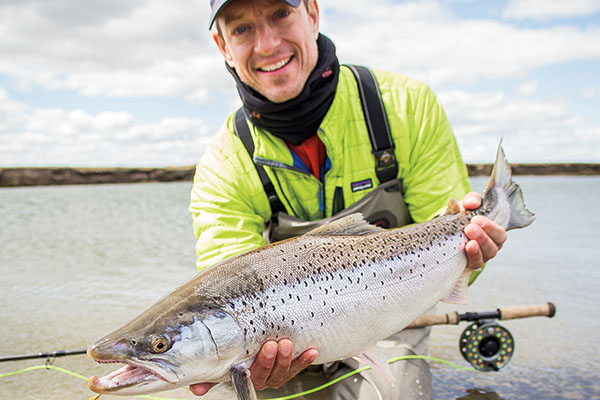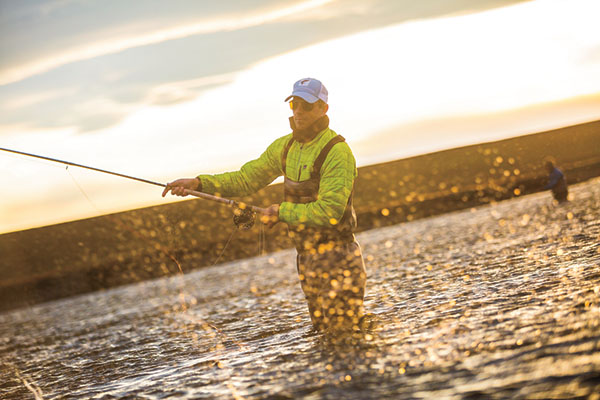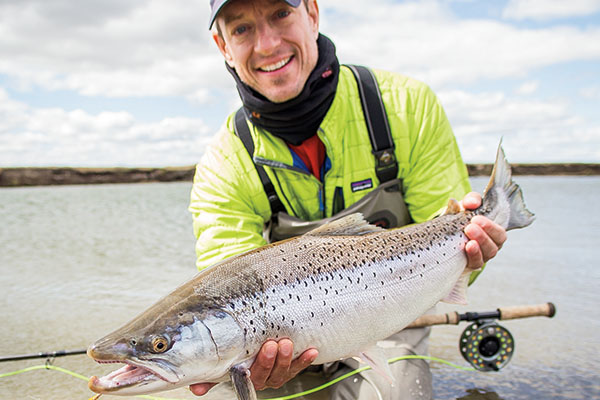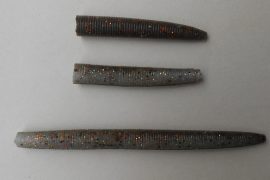
There are many places in the world where the fishing isn’t nearly as good as it used to be. Most places actually.
Steelhead runs in the Pacific Northwest are a shadow of their former glory. Atlantic salmon have been decimated in the U.S. to where wild populations are just barely hanging on in a few streams in Maine. Guides in the Florida Keys have been scratching their heads over a lost generation of bonefish. The oceans are depleted by 90 percent in terms of large gamefish, and you have to walk far and work hard to find a single native Eastern brook trout due to habitat loss and acid mine drainage.
On a planet where fish habitat everywhere seems to be constantly downgraded, and every year opportunities get worse and worse, it stokes your soul to find a river winding through open ranchland that is untouched and unchanged, and both scientific studies and angler results show brown trout fishing is getting better and better with every passing decade.
John Goodall, a Scottish settler who inherited estancias Viamonte and Haberton on the Rio Grande, between 1935 and 1937 stocked tributaries of that river hoping to provide a little recreation. He stocked brown trout from Hamburg, Germany, and rainbow trout from the McCloud River in California into the Ewan, Herminita, Menendez, and other rivers, thinking that some European sport could relieve some of the isolation on the island of Tierra del Fuego at the far end of the South American continent. His hope was to seed wild populations of resident trout similar to other mutton-farming outposts like New Zealand.
Brown and rainbow trout in the tributaries and in the main stem of the Rio Grande used the river’s endless spawning gravel to quickly reproduce and become self-sustaining. By the end of that decade, Goodall was catching the offspring of those original transplants.
But the conditions are harsh in this river—probably the only one of its size this close to Antarctica. The trout population found plenty of spawning and nursery habitat, but there was little forage in the Grande, and the resident trout were skinny and underfed.
In the decade of World War II, outsiders paid little attention to the Tierra del Fuego trout experiment, but in the early 1950s when recreational fishing in North America was exploding and becoming a middle class pastime, rumors spread of some exceptionally large trout in the Rio Grande that locals called una plateada or “the silver one.” Clearly, some of Goodall’s fish had found their way to the ocean and returned.
Outdoor Life writer Joe Brooks journeyed to Maria Behety Ranch three times during the 1950s and found many resident trout, and a few heavily muscled sea-run brown trout. Over the course of those trips, he caught two sea-runs larger than 10 pounds; one was 14 pounds, the other was an 18.5-pound trout that was considered spectacularly large at that time. Curiously, although there were still resident rainbows in the river, none of them migrated to the ocean to become steelhead.
Brooks was ecstatic with what he found in the Rio Grande, but what he was seeing was just the incubation period of what would become the greatest sea-run brown trout fishery in the word. In every decade since his visit, the fishing seems to be getting better as these northern immigrants evolve from one generation to the next.

Genetically they are becoming a larger race of fish as the largest males and females successfully compete for and hold spawning territories. Each generation is also becoming more adept at finding the most robust food sources in the south Atlantic. In recent decades the tourism industry has also shaped strict catch-and- release regulations through much of the river, and done away with netting in the river and estuary near the town of Rio Grande. Fewer big fish have been culled from the herd, and bigger fish are surviving and reproducing. When Brooks visited, his fish pushing into the high teens was a monster. A 20-pound fish was unfathomable.
Today, one in 50 fish weighs more than 20 pounds, and with average catch rates of three to six fish per day, the odds of running into big fish like this are pretty good. Fish over 30 pounds are caught every season and the biggest to date is Brian Yamamoto’s 46-inch-long, 25-inch-girth fish that was estimated to weigh more than 40 pounds.
The most recent scientific research shows returns of 45,000 to 70,000 adult sea runs annually to a watershed that stretches 200 kilometers into its headwaters in Chile. When the water is exceptionally high, the fish disperse throughout the watershed, but early in the season (which starts in January) and whenever the water is low, the fish are stacked mostly in the lower pools in Argentina, which are all on the site of the original Menendez Ranch. Quick math says that with 55,000 fish in the river, there is an average of more than 500 fish in each of the 102 named pools.
There are three fishing lodges in the lower river that share 32 beats of this private water in…





